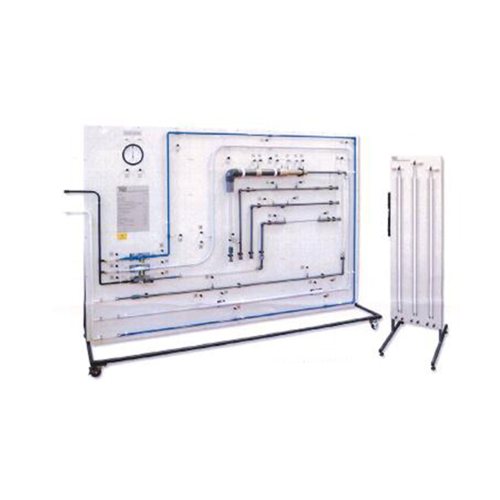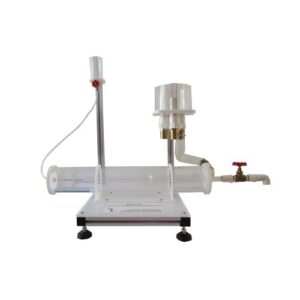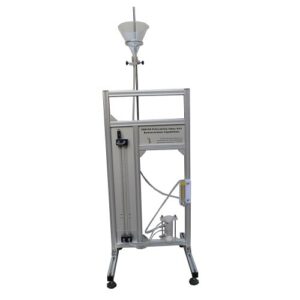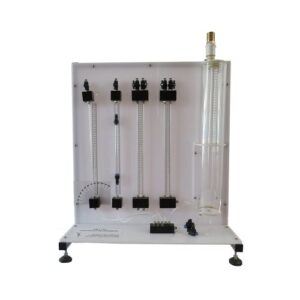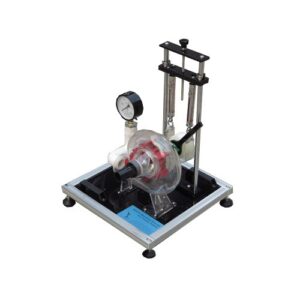SR-AH408 Fluid Friction Apparatus
Fluid Friction Apparatus Shows flow and losses in different pipes, fittings and valves. Shows popular flow measurement instruments.
Key Features
- Works with ShouldShine Hydraulic Bench for easy installation
- Includes different valves, pipes and fittings to show losses
- Includes experiments on roughened pipes
- Uses Bernoulli’s equation for incompressible fluid flow
- Shows how to use Venturi and orifice meters to measure flow
- Includes a traversing Pitot tube to measure velocity profile and flow
Learning Outcomes
- Velocity profile and the Pitot-static tube
- Flow measurement using a Venturi meter and an orifice meter Pressure (head) losses in:
- Smooth and roughened straight pipes
- Sudden expansion and contraction
- Bends and elbows
- Valves and in-line strainer
- Pipes of different diameter Key Specifications
- Venturi and orifice meters
- Three circuits
- Three downstream valves
- Three 90° bends
- Three-way piezometer
- Pressure gauge
Description ShouldShine Fluid Friction Apparatus allows detailed studies of
flow, flow measurement techniques and losses in a wide variety of pipes and fittings. The equipment has three water circuits with instruments, pipes and pipe fittings including a different valve on each circuit. The valves are downstream of each circuit to avoid upstream turbulence. The innermost of the three circuits has interchangeable sections that include the orifice, Venturi, Pitot, roughened pipe and the strainer. A mobile, space-saving vertical panel holds all the pipes and fittings for easy use.
supplies the circuits with a controlled and measured flow of water.
To measure pressure loss across each part, students use a piezometer set and differential pressure gauge (included). To adjust the datum water level in the tubes of the piezometer set, students connect a hand-pump (included) to the air valve above the tubes. To perform experiments students set the hydraulic bench to pump water through a circuit and measure pressure losses through the pipes and fittings. They also find the losses in a rapid enlargement and contraction. Several pipe sections are of different diameter to show how this affects pressure loss
The Venturi meter and orifice plate instruments show students two common methods of measuring water flow. They also give applications of Bernoulli’s equation for incompressible fluid flow. Students use them to measure flow and compare the losses of each. The equipment also includes a Pitot-static tube. By traversing the Pitot across the pipe diameter, students can find the velocity profile and flow coefficients. They also find the relationship between the flow rate and pressure differential. An artificially roughened pipe allows students to study friction factor at different Reynolds numbers. They can compare results to those predicted by Nickuradse’s results and a Moody chart. Standard Features
• Supplied with a comprehensive user guide

